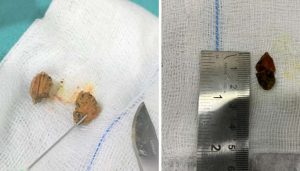Latest technological Trends in Cancer Treatment

The last 50 years has seen rapid development in the world of science and technology and these advances have helped break the traditional barriers of conventional treatment of many a dreaded disease which have haunted mankind, especially cancer. The future is likely to see an increase in the number of cancer related cases with almost 2/3rds of the total cases occurring in developing and economically backward countries. The most common channels of treatment include surgery, chemotherapy, radiotherapy, immunotherapy, hormone therapy and radiation therapy. Breast cancer screening, introduced in the 70s, proved that many breast cancer deaths can be prevented with consistent mammogram screenings and timely treatment. Digital mammography in 2000 and today, women have become more aware of the benefits of mammogram screenings with the death rate reducing by almost 20%. The latest in digital is 3-D tomosynthesis. The 2-D mammogram process sometimes does not fully detect all /any cancers but 3-D tomosynthesis helps view the breast in detail by capturing multiple image slices.
Also now there are nuclear medicine approaches to breast imaging. These include positron emission mammography (PEM) which uses Positron emission tomography (PET) with a fluorine-18 fluorodeoxy glucose (F-18 FDG) radio
tracer. Interventional oncology is another technology of treating. Medical practitioners/experts are able to utilize imaging guidance hardware and software to target only the tumours and not the healthy cells. Radio embolization, (radioactive particles delivered through the bloodstream to a tumor, lodge in the tumor and discharge radiation killing the cancer cells) is a minimally-invasive process and includes
embolization and radiation therapy to treat liver cancer is one of the preferred therapies in many cancer cases. This reduces in hospital admission time and costs.
The future is likely to see an increase in the number of cancer related cases with almost 2/3rds of the total cases occurring in developing and economically backward countries
Surgical robots have been around for many years. Autonomous robots are capable of conducting all procedures in the presence of human supervision with no intervention unless required. The surgeries by teleoperated robots are performed with a surgeon remotely controlling every action of the Robotic surgery has many more advantages than manual surgeries for certain organs by being more precise quick. Artificial Intelligence (AI) systems are soon going to head the frontiers of all surgical simulations and procedures. From storage of medical information and responding to queries of surgeons to machine learning algorithms in the detection of distinct diseases, AIl will serve as intelligent surgical assistants. At the same time, we can look at the most popular treatment for cancer i.e. Radiation Therapy.
Radiation therapy or radiotherapy (RT) is the most common treatment preference for cancer around the world. Post detecting the cancer cells in the body, high-energy particles or waves, such as x-rays, gamma rays, electron beams, or protons is used to destroy or damage cancer cells. Radiation therapy works by making small disruptions in the cells. These breaks in turn prevent cancer cells from growing and multiplying and causing them to die. Unlike chemotherapy, where the whole body is exposed to cancer-fighting drugs, radiation therapy is usually a indigenous treatment. Most often, only the part of the body being treated is affected. Radiation treatment helps damaging cancer cells, with little harm to nearby healthy cells.
With new forms of treatment being revealed at each stage for cancer, the other therapy which has helped are biomarkers. Biomarkers are any calculable features of an organism that reflect a particular functional state. In medicine, bio markers are often combinations isolated from serum, urine, or other fluids which are used as an indicator of the presence or severity of a particular disease. Cancer biomarkers in the body include physical changes within the genome, abnormal features of genetic factor, or biochemical effects of the tumor. Cancer biomarkers are used for different aspects of cancer care. At present we can see many biomarkers which can be used to assess a person’s probabilities for developing cancer. Some biomarkers are used for early detection (screening) and identification (diagnosis) of cancer. After cancer is diagnosed, biomarkers are also be used to plan the treatment of the patient. We are in existing time in the development of the newer healthcare technologies.





